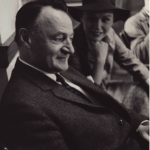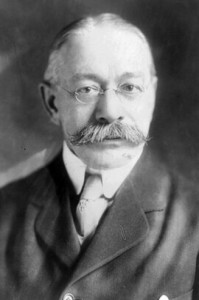North Midwestern Bewilderment – A Bio Piece
 The other day I was walking along the Milwaukee River in Estrabrook Park amazed, as I am every year, at the colors of the leaves changing. I noticed around ten different individuals wading in the water and casting flies into the current. My mind went back to John D. Voelker, the attorney, author, Michigan Supreme Court Justice, and fly-fisherman who was as at home in the north woods and spinning a narrative as he was in a courtroom.
The other day I was walking along the Milwaukee River in Estrabrook Park amazed, as I am every year, at the colors of the leaves changing. I noticed around ten different individuals wading in the water and casting flies into the current. My mind went back to John D. Voelker, the attorney, author, Michigan Supreme Court Justice, and fly-fisherman who was as at home in the north woods and spinning a narrative as he was in a courtroom.
One of the most cited Michigan Supreme Court decisions authored by Voelker is Mitcham v. City of Detroit, 355 Mich. 182 (1959). In it the court examined a tort case by a couple who had been injured while riding in a “trackless motor coach” that stopped abruptly, hurling the wife into a metal stanchion. The legal issue turned on whether or not the plaintiff’s prima facie negligence argument was of proper form. In finding for the Mitchams, Justice Voelker, writing for the majority, took the opportunity to make some broader assessments about litigation and the aims of procedure:
“The cause of a deserving litigant is no less dead when it is slain by a procedural arrow than if there were no cause at all. . . . It is bad enough that individual litigants have thus been made unjustly to suffer, but that is not all. This has frequently been done with the helpless acquiescence if not active aid of our courts. Too often the trial of cases has become a game of legal hide-and-seek. Just as bad has been the accompanying bewilderment and cynicism of the public—including the jurors who vainly sat on the case—over the baffling mysteries and vagaries of the law. The public has sometimes been righter than it knew.” Id. at 196.

